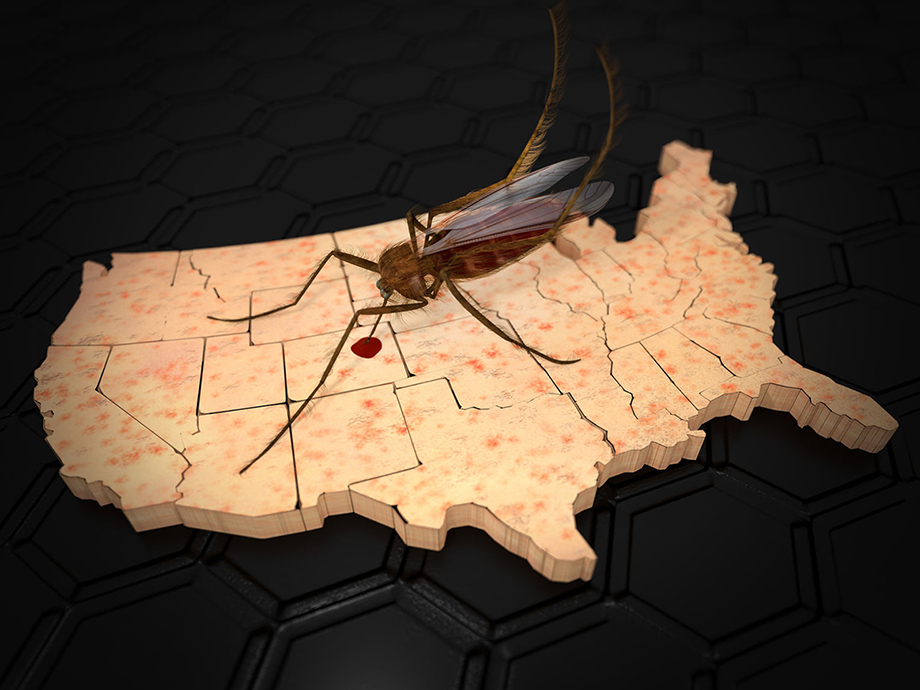Local Zika Transmission in U.S. Tied to Rise in Birth Defects
January 30, 2018, 02:12 pm News Staff — Areas of the United States and its territories that experienced local Zika virus transmission in the latter part of 2016 saw a significant rise in birth defects strongly associated with Zika infection during that time.

That's according to a CDC Morbidity and Mortality Weekly Report (MMWR) released Jan. 26.
Areas with local transmission of the virus — Southern Florida, a portion of South Texas and Puerto Rico — saw a 21 percent jump in births with Zika virus-related defects during the second half of 2016 compared with the first half of the year.
Regardless, the agency said its findings bolster the importance of continued surveillance for birth defects potentially related to Zika virus infection and continued monitoring in areas at risk for the disease.
"Babies with Zika-related birth defects need all the help they can get, as soon as possible and for as long as they need it," said CDC Director Brenda Fitzgerald, M.D., in a news release. "This report highlights the critical importance of documenting birth defects possibly related to Zika and our need to maintain vigilance."
Story Highlights
For the report, CDC researchers examined a cohort of nearly 1 million births in 2016 in 14 U.S. states and one territory: Florida (select southern counties), Georgia (select counties in the Atlanta metropolitan area), Hawaii, Illinois, Iowa, Massachusetts, New Jersey, New York (excluding New York City), North Carolina (select regions), Rhode Island, South Carolina, Texas (select regions), Utah, Vermont and Puerto Rico.
The agency found that three of every 1,000 live births in these areas had a birth defect possibly associated with maternal Zika virus infection.
Among the infants with birth defects,
- about half were born with brain abnormalities and/or microcephaly;
- 20 percent had neural tube defects and other early brain abnormalities;
- 9 percent had eye abnormalities without brain abnormalities; and
- 22 percent had nervous system damage, including joint problems and deafness, without brain or eye abnormalities.
The agency warned that because many pregnant women exposed to Zika virus in late 2016 gave birth in 2017, further increases in possible Zika-related birth defects could be observed when those 2017 data are analyzed.
The CDC data were drawn from the U.S. Zika Pregnancy and Infant Registry and the Zika Birth Defects Surveillance System. Each system relies on collaboration between state and territorial Zika pregnancy and infant registries and birth defects surveillance systems.
The pregnancy and infant registry, in particular, offers an early alert mechanism for recognizing clinical characteristics and manifestations of infants and fetuses with potential congenital infection, the MMWR report noted, with more than 7,000 pregnancies with laboratory evidence of Zika virus infection reported to date.
According to the agency, these surveillance systems also can be adapted to monitor other emerging pregnancy, infant and newborn outcomes of concern beyond structural birth defects, including functional problems such as hearing loss, and can provide additional clinical information through standardized data collection and clinical review.
Finally, the birth defect surveillance systems can help facilitate timely provision of services to infants with birth defects and further work to assess subsequent health and developmental outcomes among these children.
"Our pregnancy and birth defects surveillance networks are a collaborative effort with state, local and territorial health departments and are essential to protect mothers and babies affected by Zika virus," said Peggy Honein, Ph.D., M.P.H., acting director of the Division of Congenital and Developmental Disorders, National Center on Birth Defects and Developmental Disabilities, in the release. "These networks can also be used as models to help track other known and emerging health threats for mothers and babies."
More From AAFP
Zika Virus Outbreak